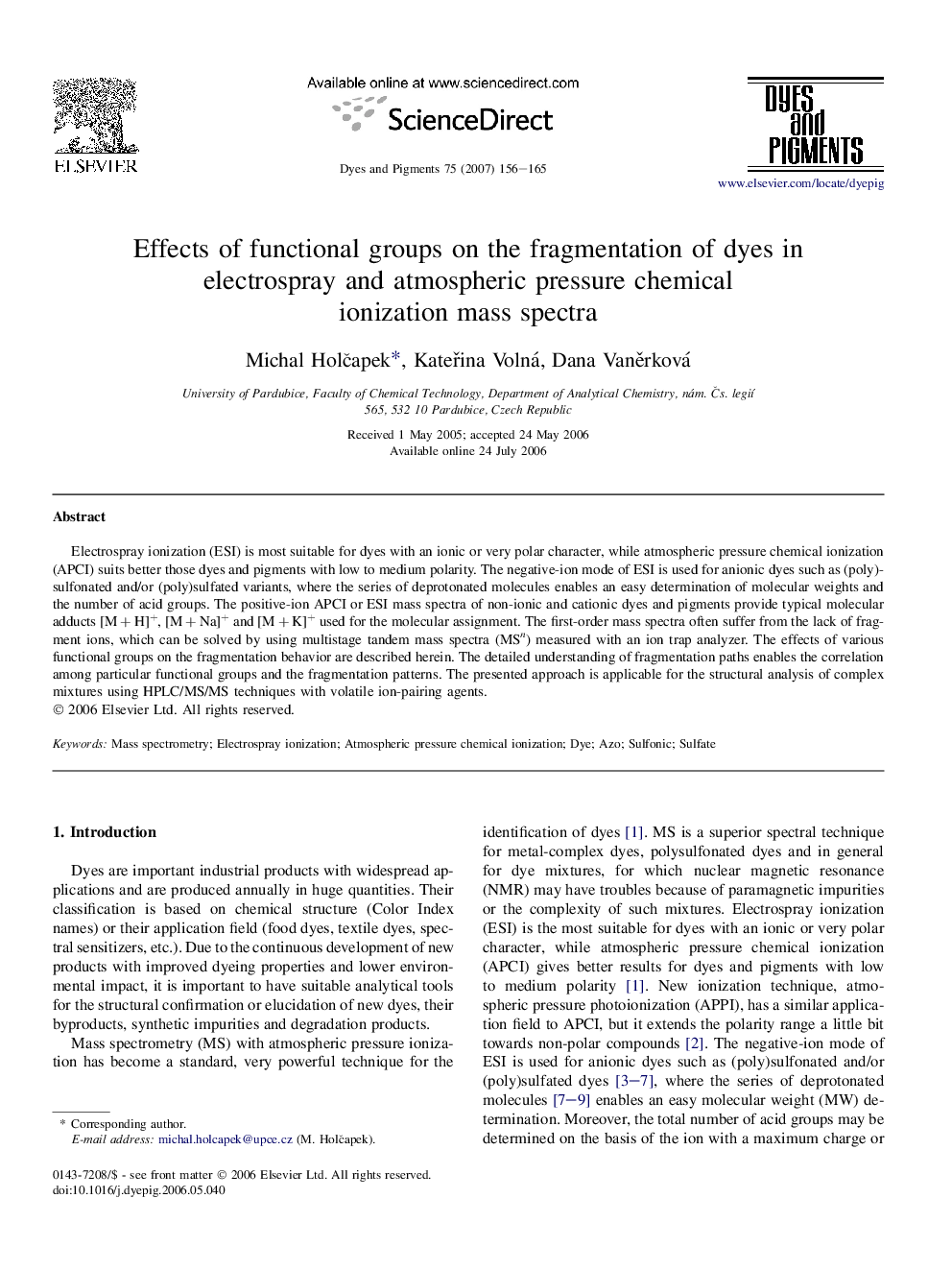| Article ID | Journal | Published Year | Pages | File Type |
|---|---|---|---|---|
| 177702 | Dyes and Pigments | 2007 | 10 Pages |
Electrospray ionization (ESI) is most suitable for dyes with an ionic or very polar character, while atmospheric pressure chemical ionization (APCI) suits better those dyes and pigments with low to medium polarity. The negative-ion mode of ESI is used for anionic dyes such as (poly)sulfonated and/or (poly)sulfated variants, where the series of deprotonated molecules enables an easy determination of molecular weights and the number of acid groups. The positive-ion APCI or ESI mass spectra of non-ionic and cationic dyes and pigments provide typical molecular adducts [M + H]+, [M + Na]+ and [M + K]+ used for the molecular assignment. The first-order mass spectra often suffer from the lack of fragment ions, which can be solved by using multistage tandem mass spectra (MSn) measured with an ion trap analyzer. The effects of various functional groups on the fragmentation behavior are described herein. The detailed understanding of fragmentation paths enables the correlation among particular functional groups and the fragmentation patterns. The presented approach is applicable for the structural analysis of complex mixtures using HPLC/MS/MS techniques with volatile ion-pairing agents.
